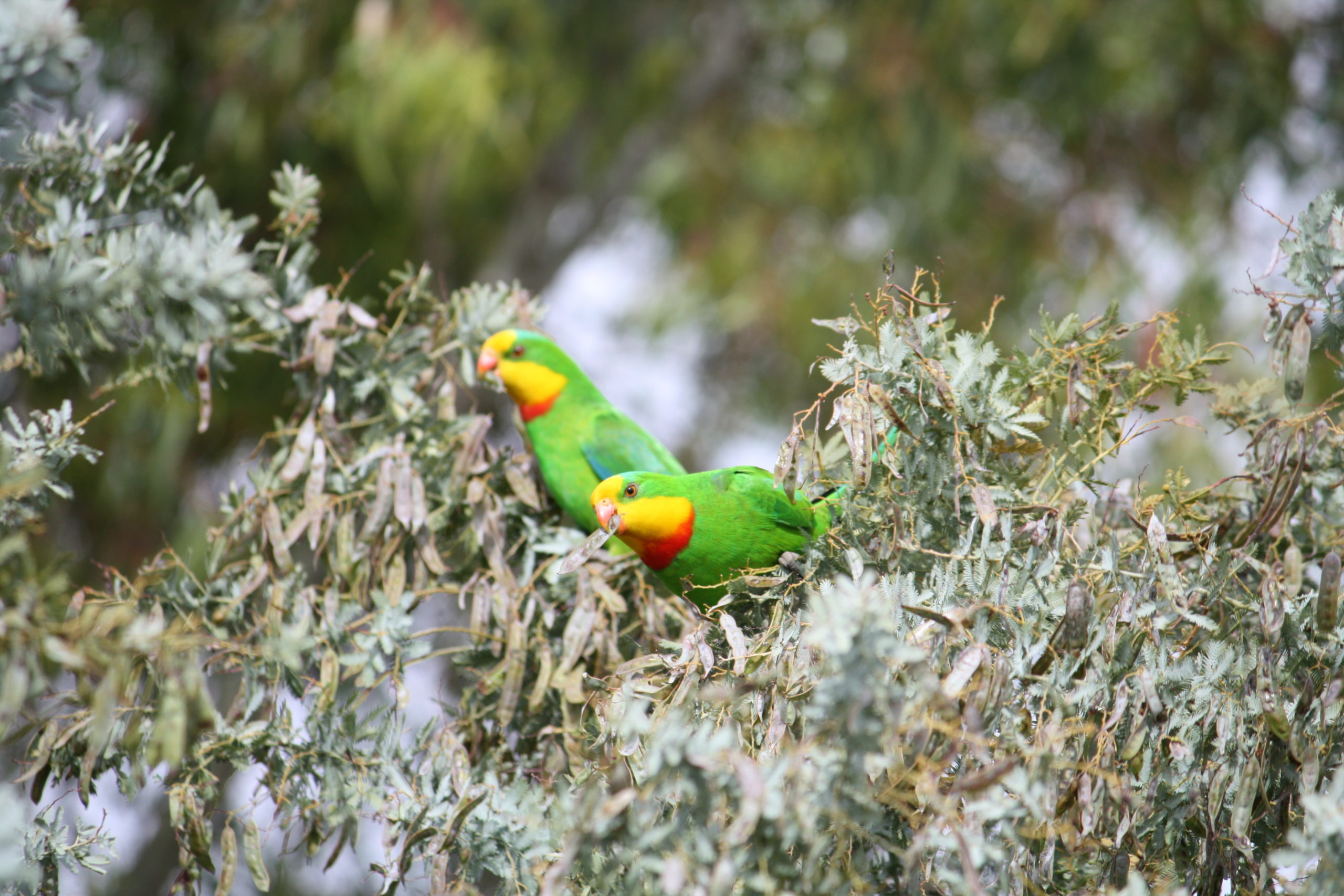Listen carefully and you’ll notice a distinctive sound. In between the throaty cries of crows and the screeching of galahs, the warbling tones of the Superb Parrot colour the air as they feast on flowering gums and grass seeds.
There is some debate around the remaining number of Superb Parrots in the wild, whether there is 8,000 or 10,000, however the fact we can all agree on is that their numbers are declining.
But not if local Landcare and community groups have anything to do with it.
Established in 2017, a consortium including Boorowa Landcare, Hovells Creek Landcare, Upper Lachlan Landcare, Lachlandcare & Mid Lachlan Landcare are working together with partners Cowra Woodland Birds, Greening Australia and National Parks & Wildlife Service NSW to ensure that the parrots and the project that supports them has a fighting chance.
Found along inland Eastern NSW, the parrots face many challenges. As a mainly hollow-bearing species, the parrots require trees of over 100 years old – as only mature trees create hollows – and are restricted to certain tree species such as Box-Gum, Box-Cypress-pine and Boree Woodlands and River Red Gum Forest as well as Blakely’s Red Gum, Yellow Box, Apple Box and Red Box.
But with a support group as collectively diverse as the species habitat range, the passion and dedication that the members bring to preserving the species is inspiring and heartening.
Bird walks have been held over all the region, as part of the broader SoS program. The one last month brought it to six.
Educational seminars have been going for more than five years and up to 100 participants have been trained in the monitoring technique through this project.
Dedicated programs spanning years to support not just the superb parrot but all birdlife and the supporting ecosystems? Absolutely.
For Local Landcare Coordinator for Boorowa Landcare, Linda Cavanagh, the involvement and support of community groups and local landholders has helped sustain the momentum for the continuation of the programs.
“Community involvement is crucial. But community enthusiasm is a driving factor and is so important too. Boorowa Landcare is one of five Landcare groups in our region who have taken on supporting the Superb Parrot and the ecosystems on which they rely on.
“One of our biggest drivers has been local landholders collating and collecting data about the birds and feeding into this program.
“Our birdwalks and regular bird surveys help build the knowledge of population trends, key flight paths and the success factors that lead to successful breeding ecology of the Superb Parrot.
“With such a vast habitat area, collaborations such as the ones between all our local landcare groups are so important and we can help build the knowledge base to help support our work and advocacy for the species.
“Of course, the key strength of the program has been the community engagement activities to increase awareness and interest in project participation by keen volunteers, we couldn’t do it without them,” Linda said.
The funding for the program and activities comes from Department of Planning, Industry and Environment (previously Office of Environment & Heritage) and has helped ensure that Superb Parrot restoration actions in the broader Saving Our Species (SoS) program continue.
Local Superb Parrot expert, Pat Downey, says collective group’s involvement in supporting the species lead to greater data collection and consistency that is in line with Regional and State wide data bases.
“I’ve been working with Landcare for five years and have seen the growth of passion and ownership for the health of the species.
“The education component is critical is helping communities understand their impact on the local environment and how removing just one tree can have a huge ripple effect on all local species. You are removing a potential home, food source, shelter for other species, microbes in the soil for other vegetation. But, by leaving that tree and protecting it by fencing it off to protect it in combination with planting understorey shrubs you are investing in your land, your profitability and the future of a multitude of species.
“Additionally, by fencing off existing paddock trees you are also supporting your livestock as you are supporting the health of the tree and future trees it may lead to and there’s value for everyone in those things,” Pat said.
As you watch their flight and movement you can understand why communities want to support them and their future. They’re beautiful to watch. A shift in the angle of wings, a cresting in the air and you witness a change in colour with the brilliance in green and gold and example of why a shift in perspective can mean the world of a difference.
The Saving Our Superb Parrot is funded by the NSW Department of Planning, Industry and Environment Saving Our Species (SoS) program.


